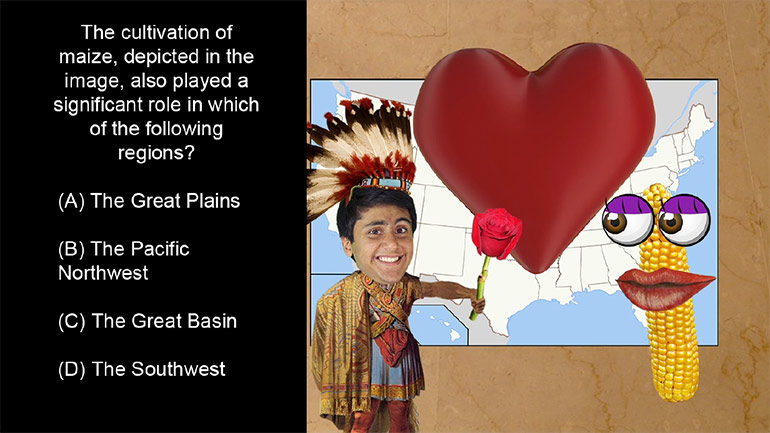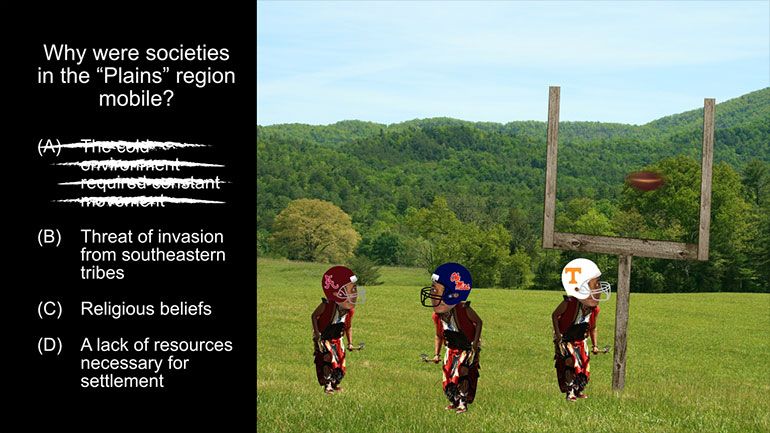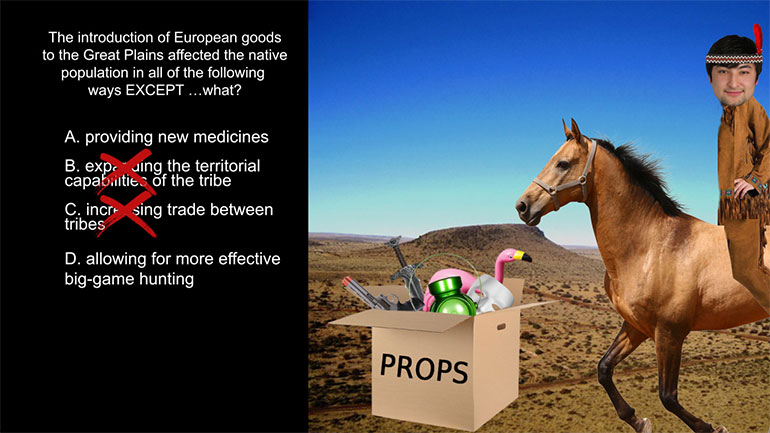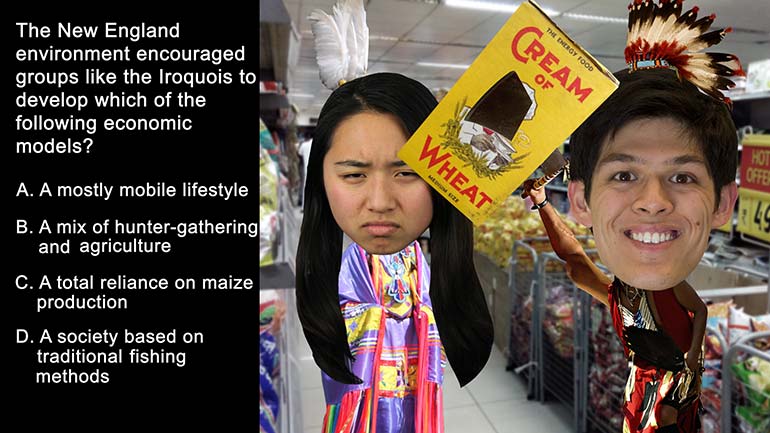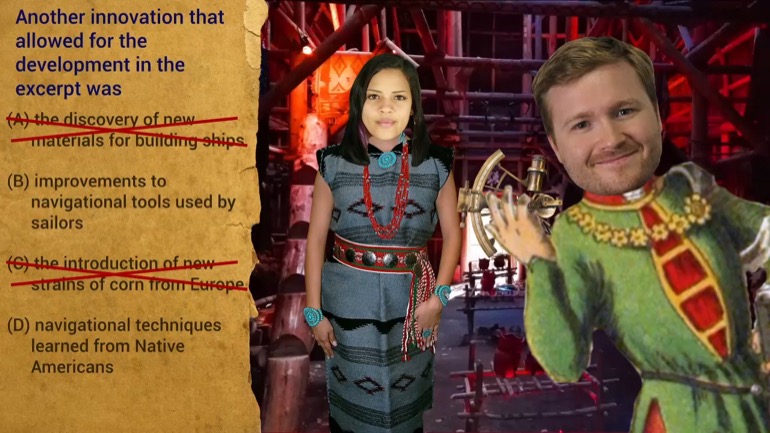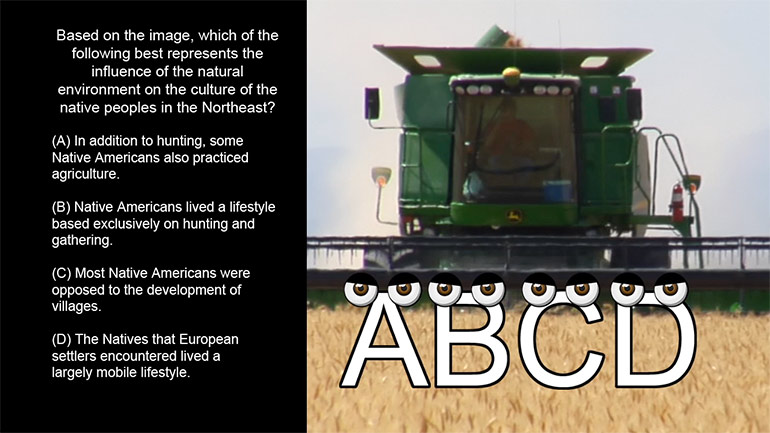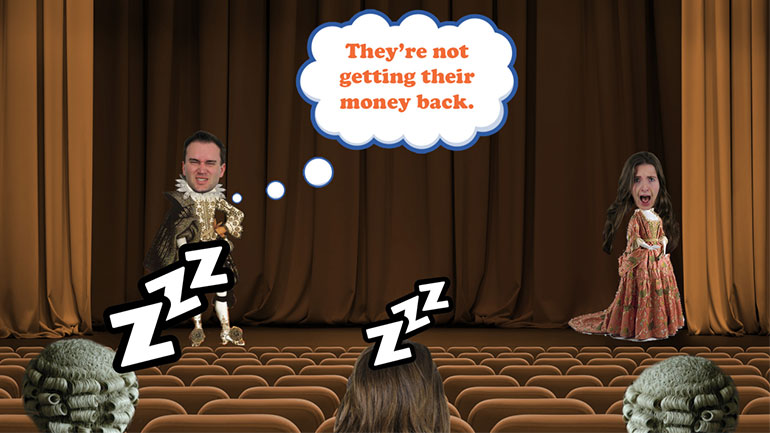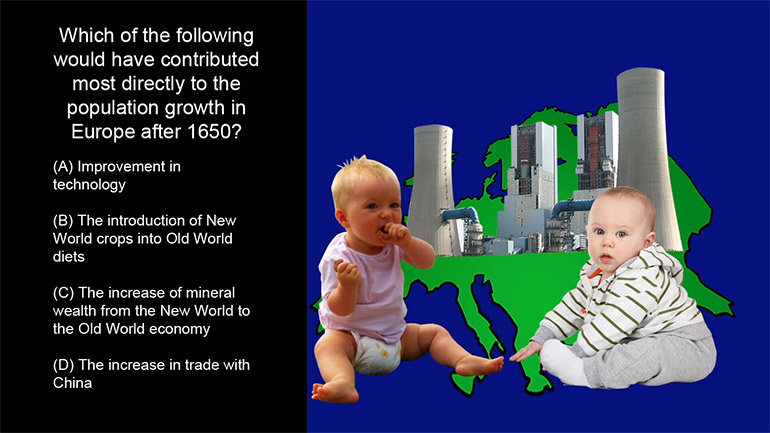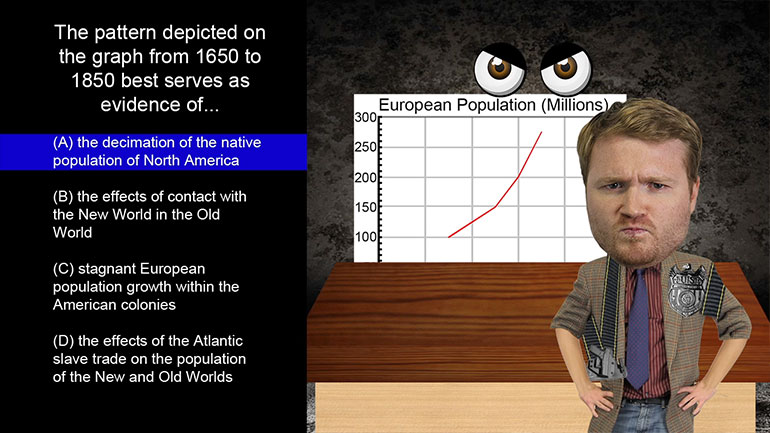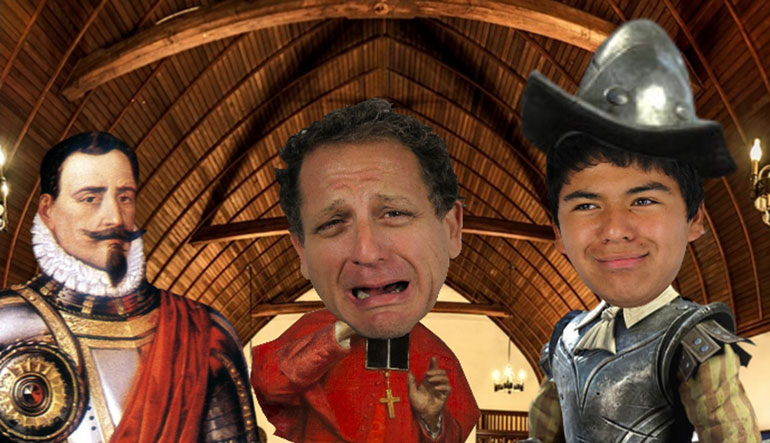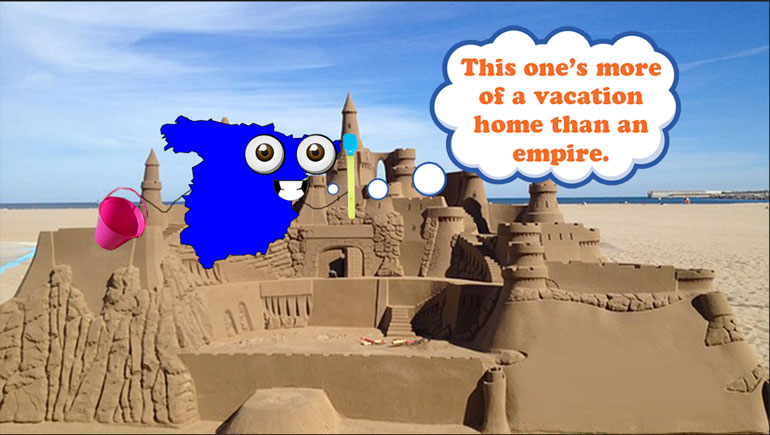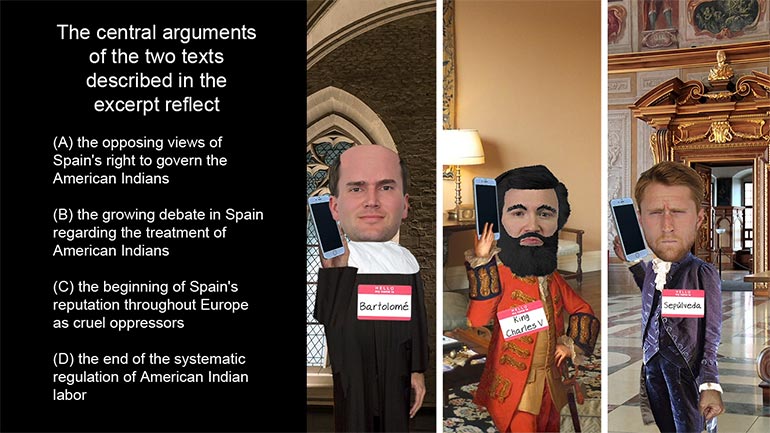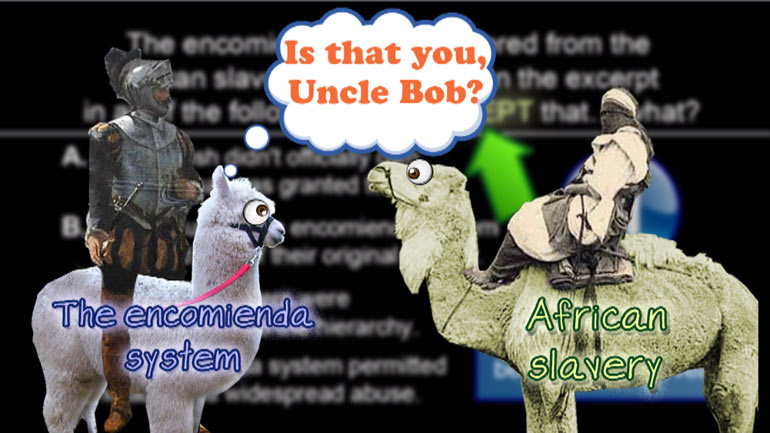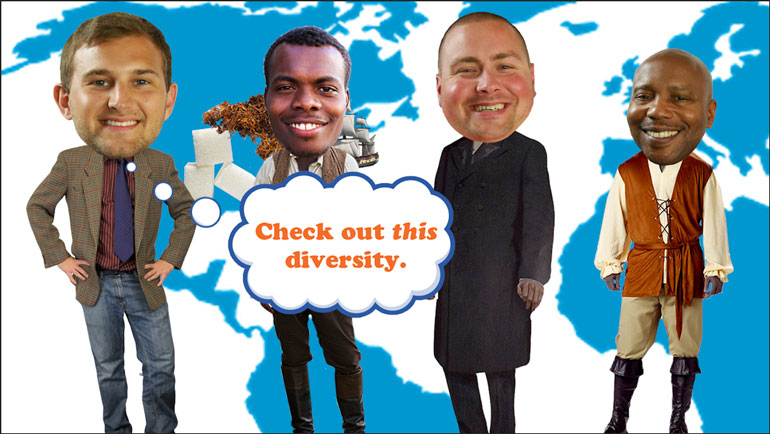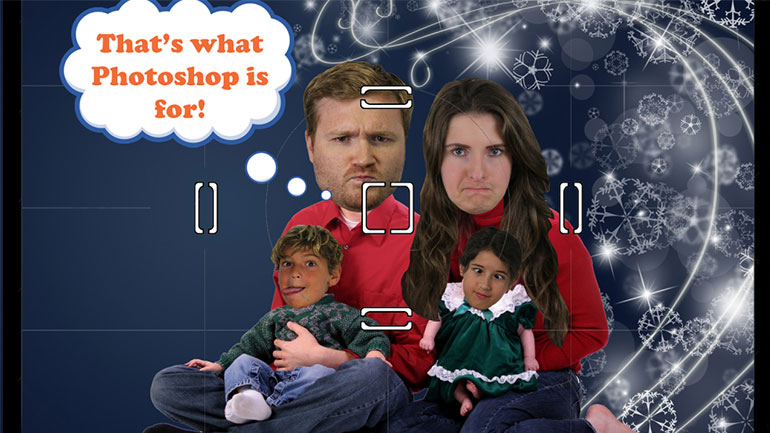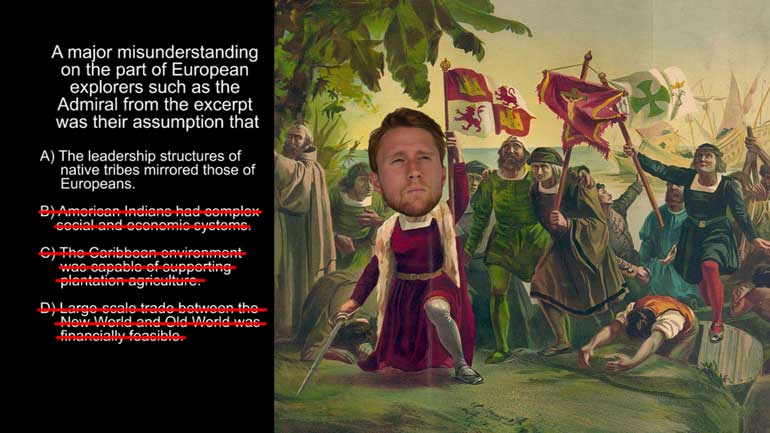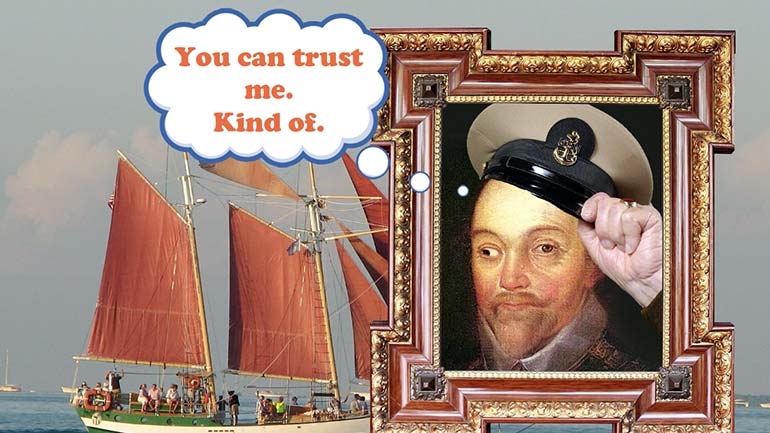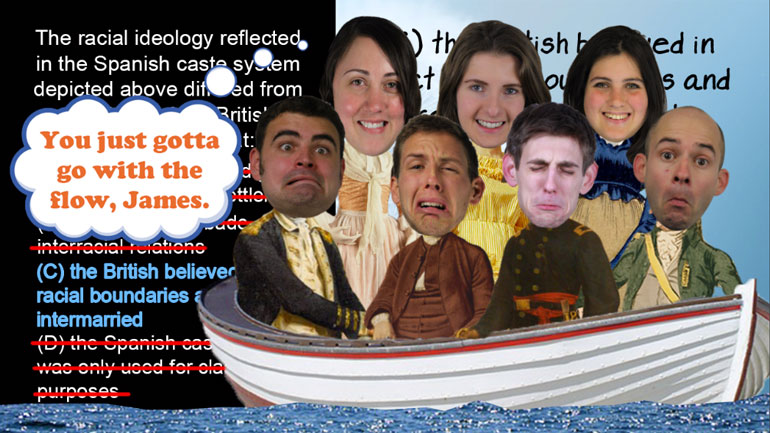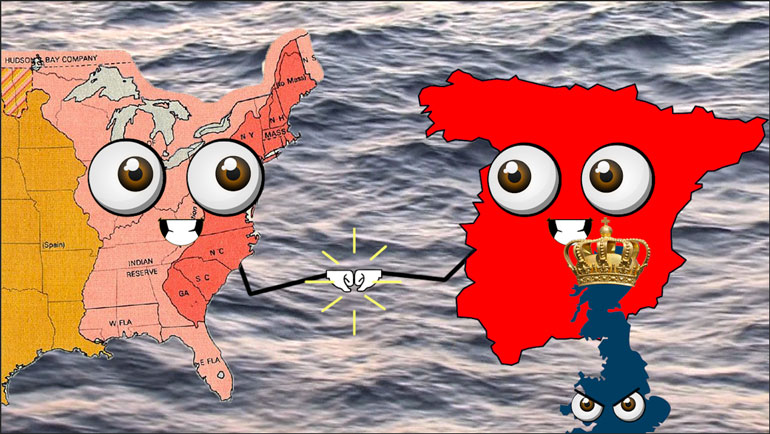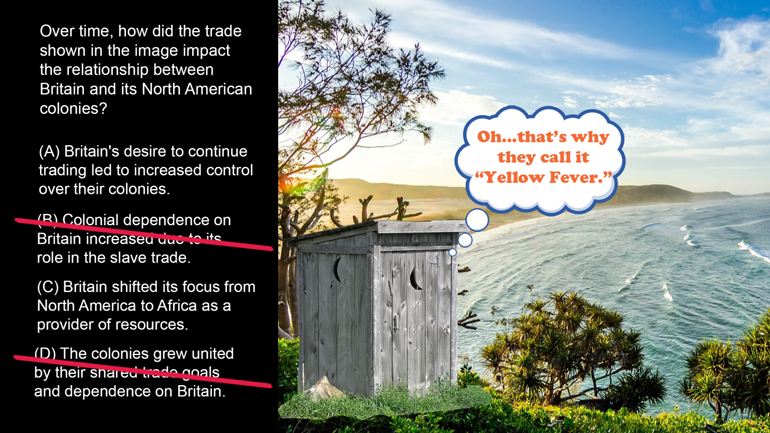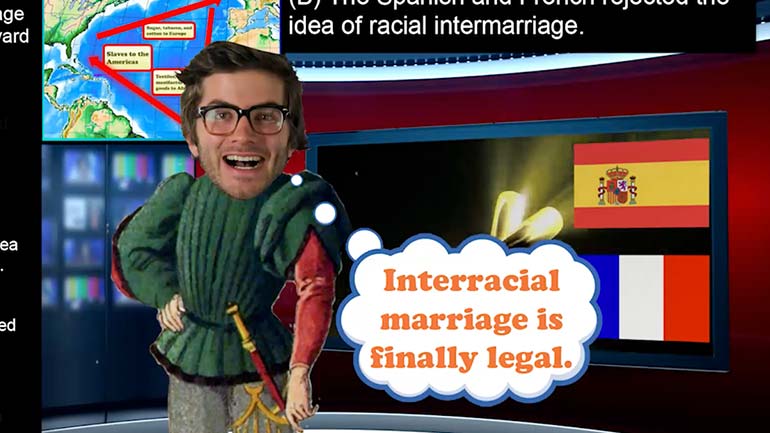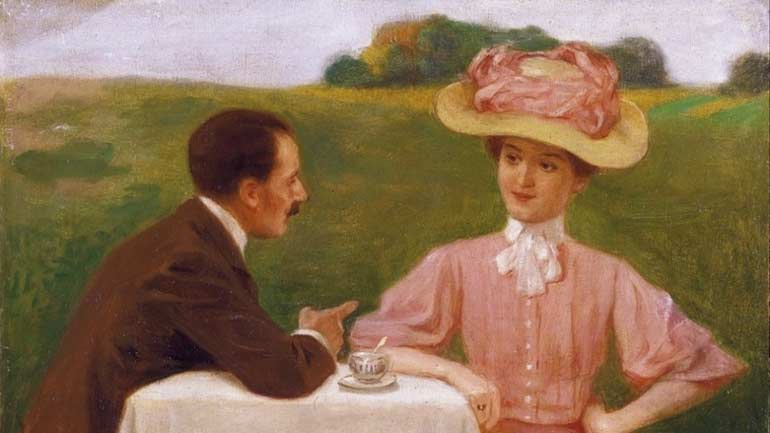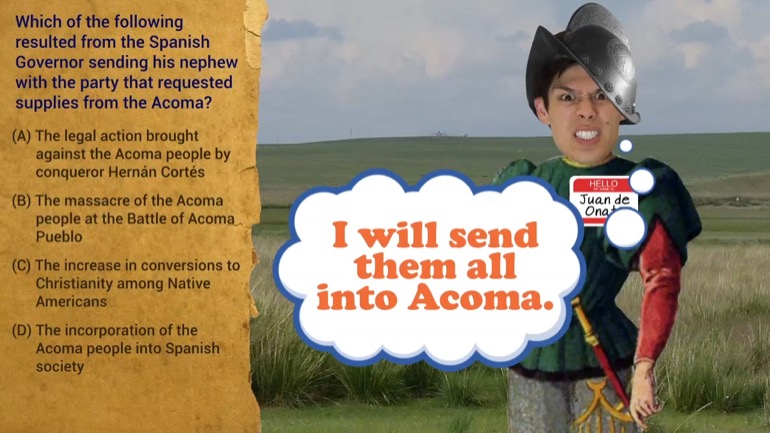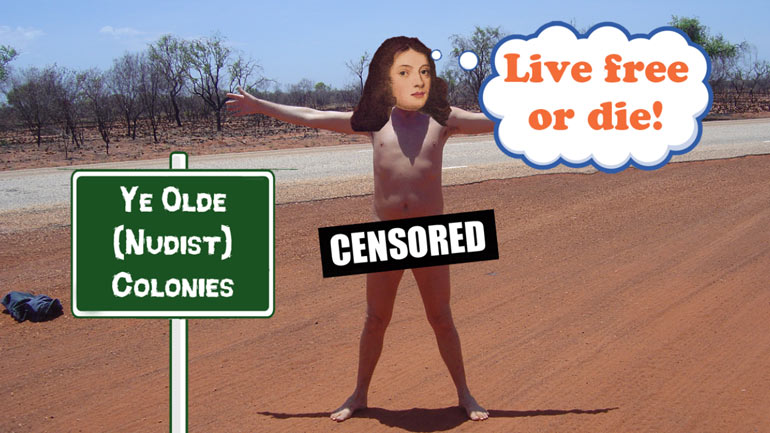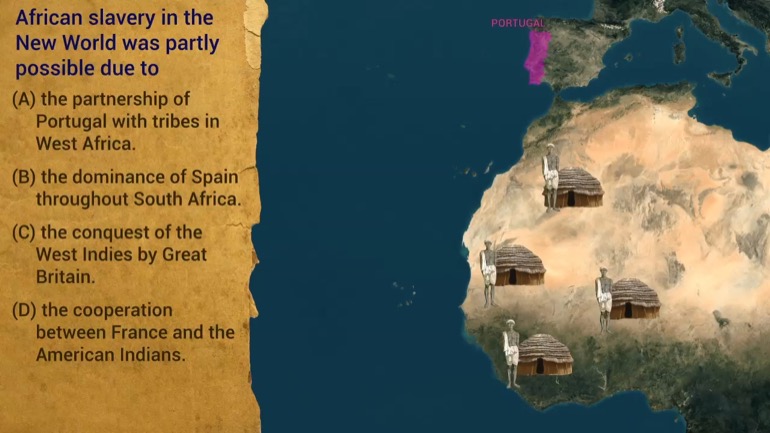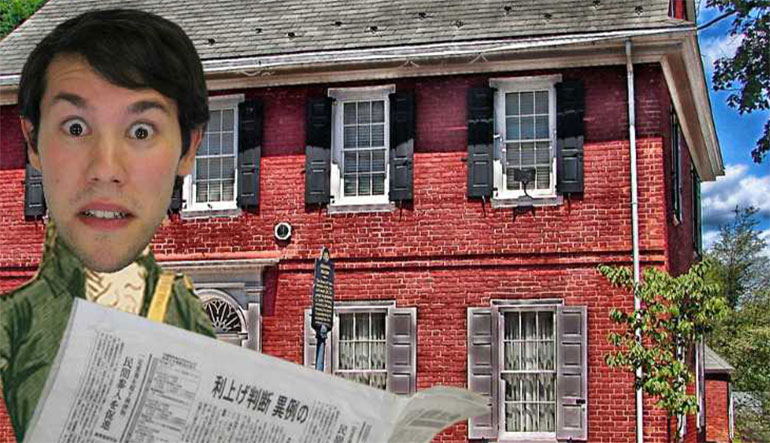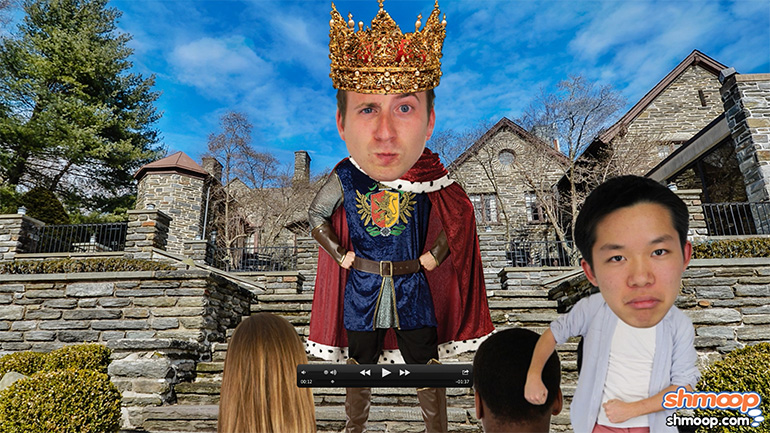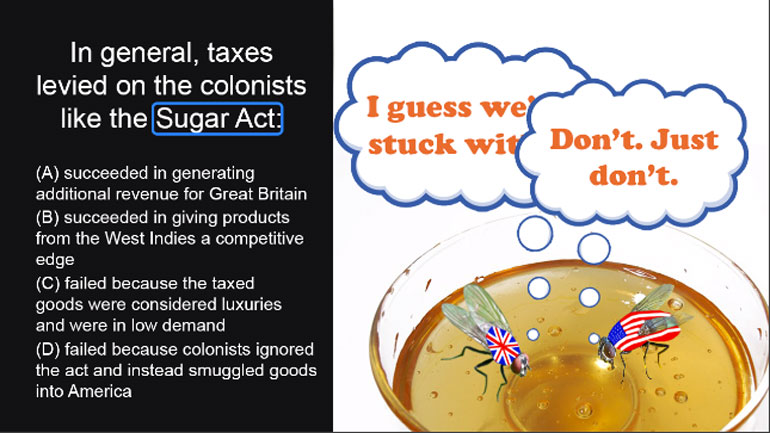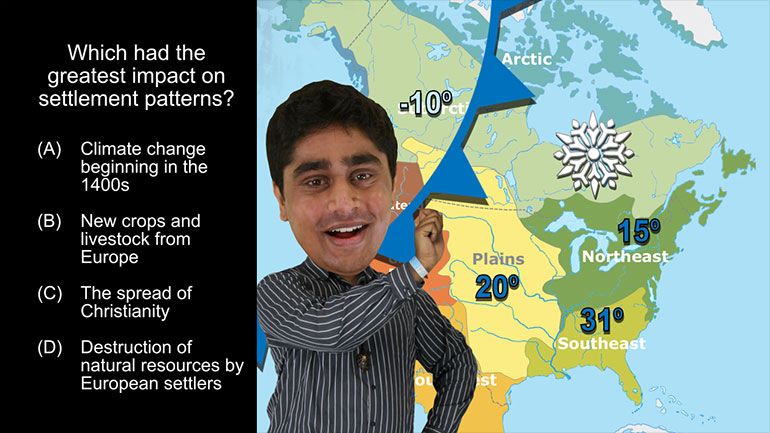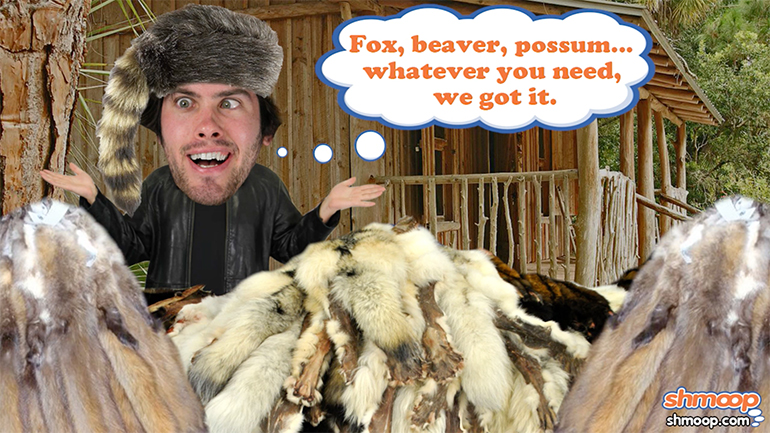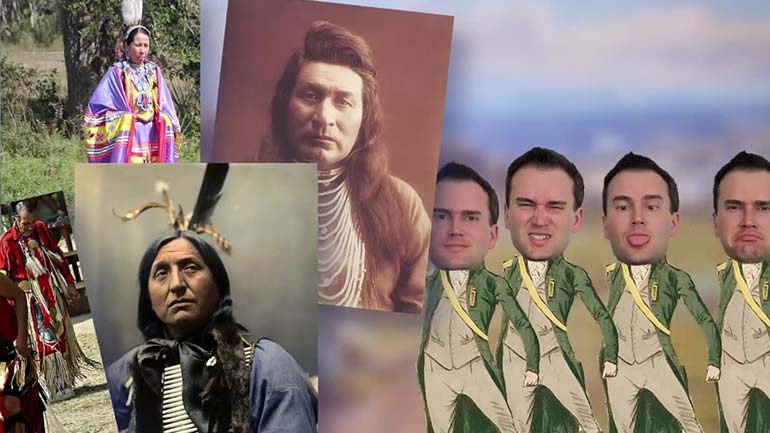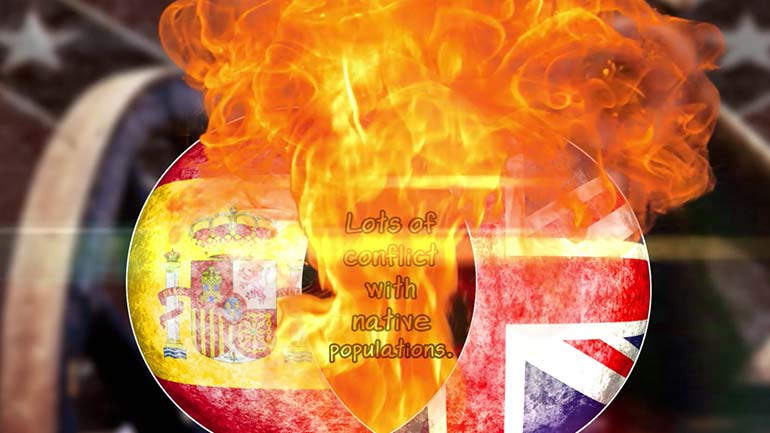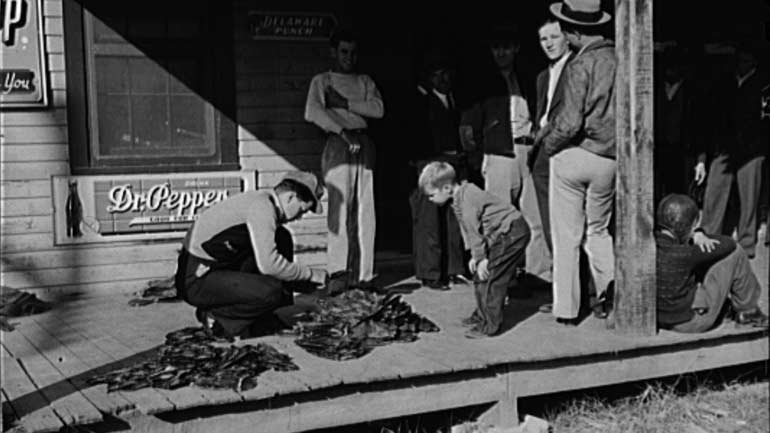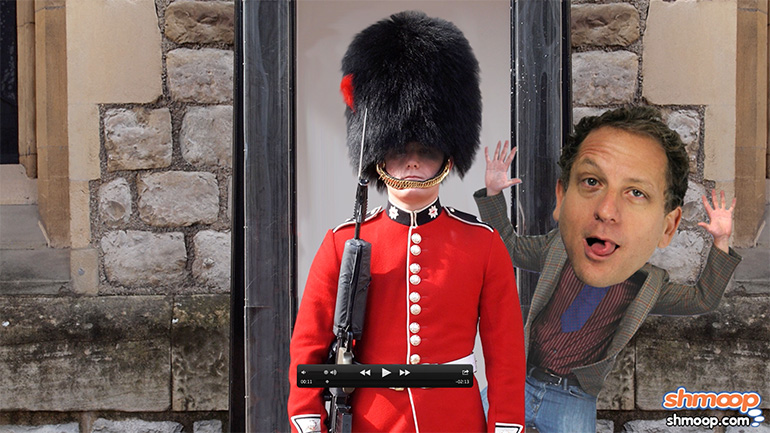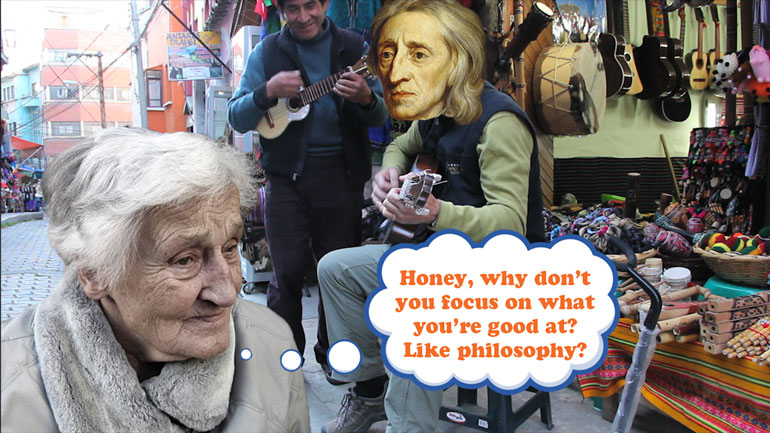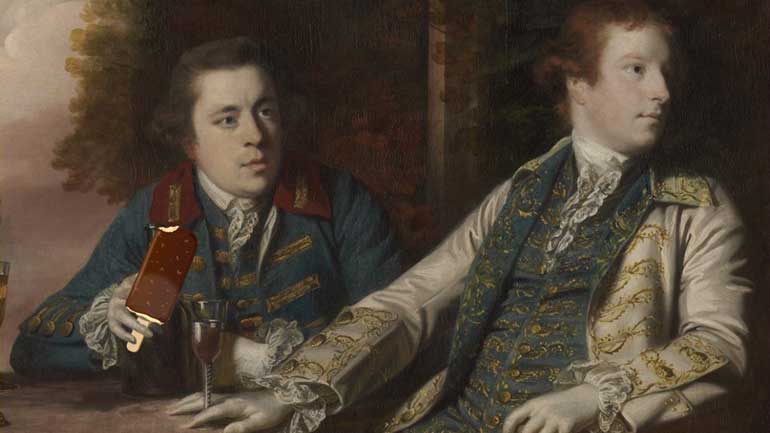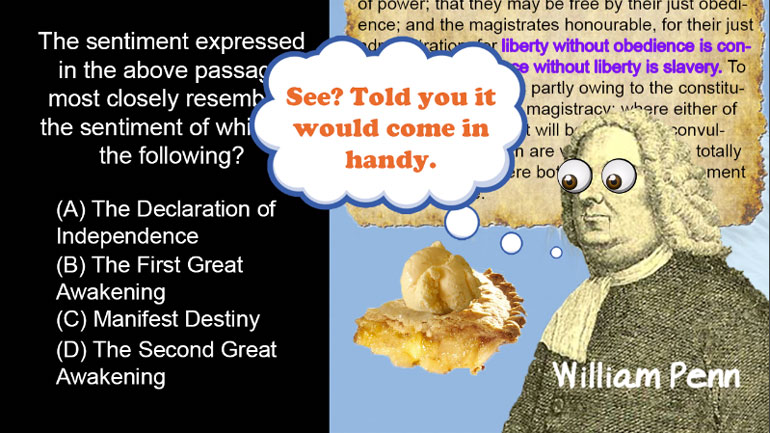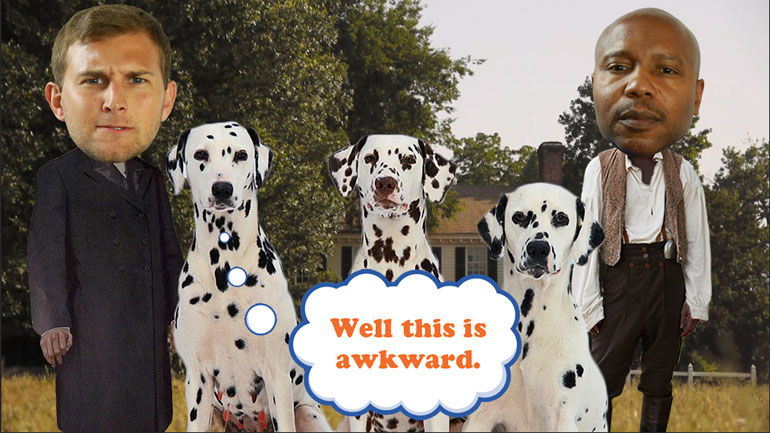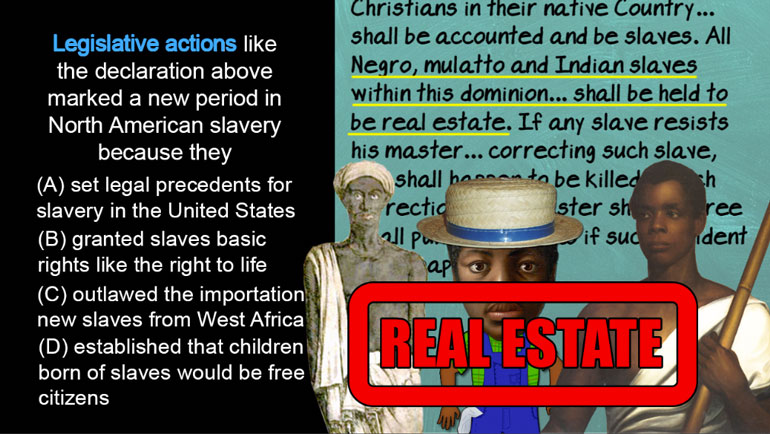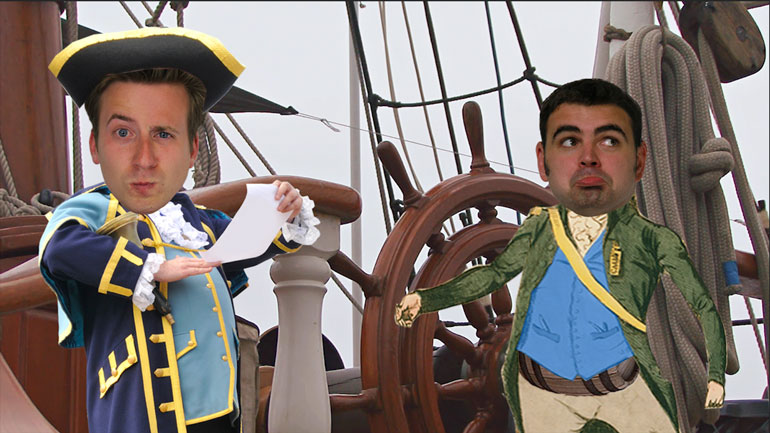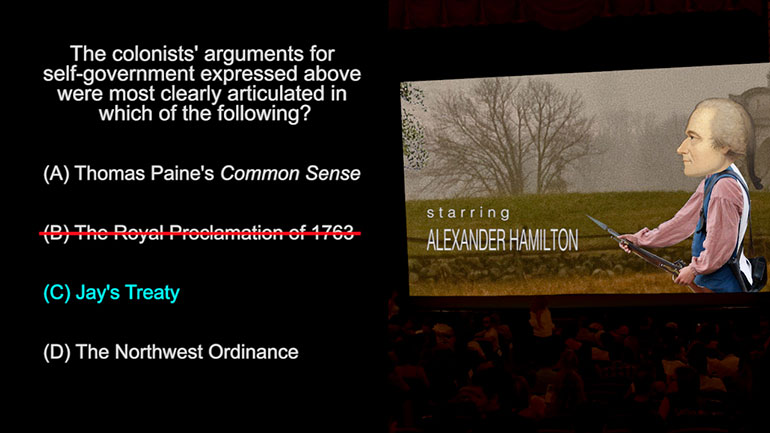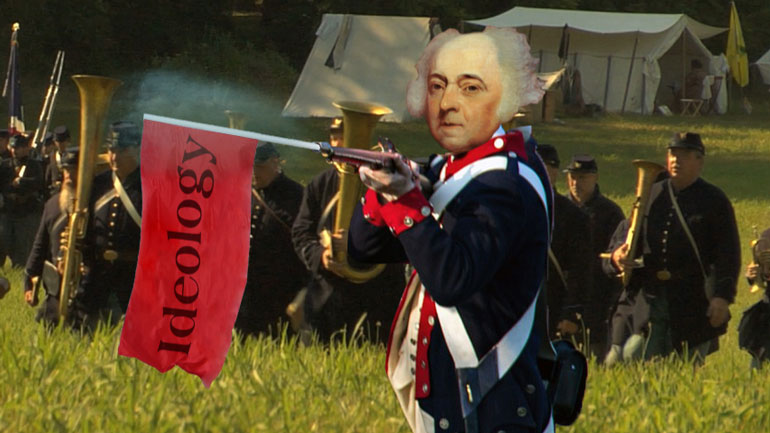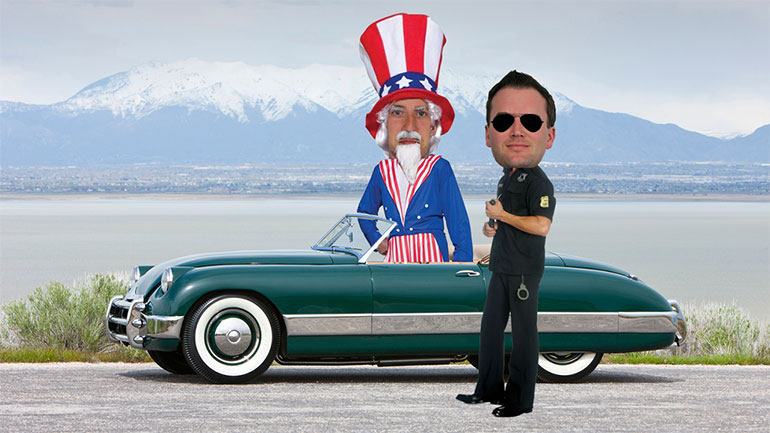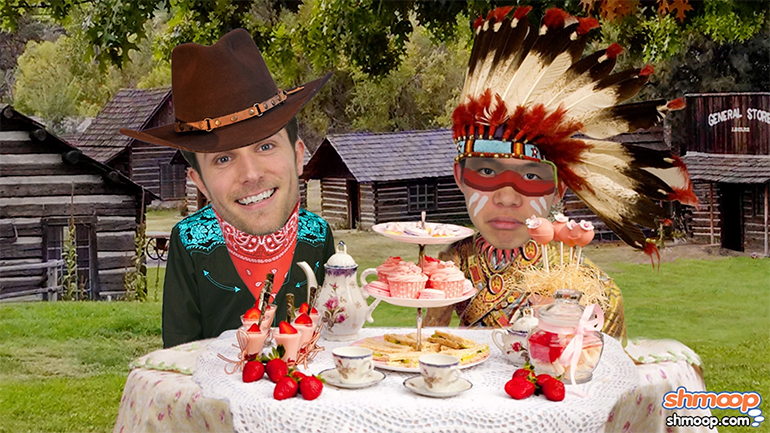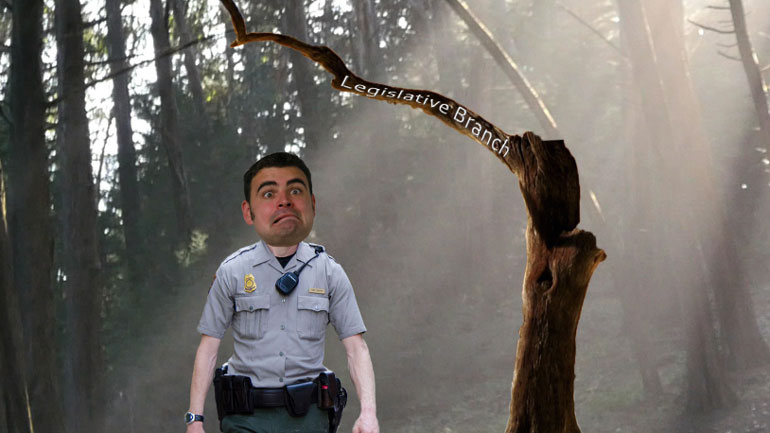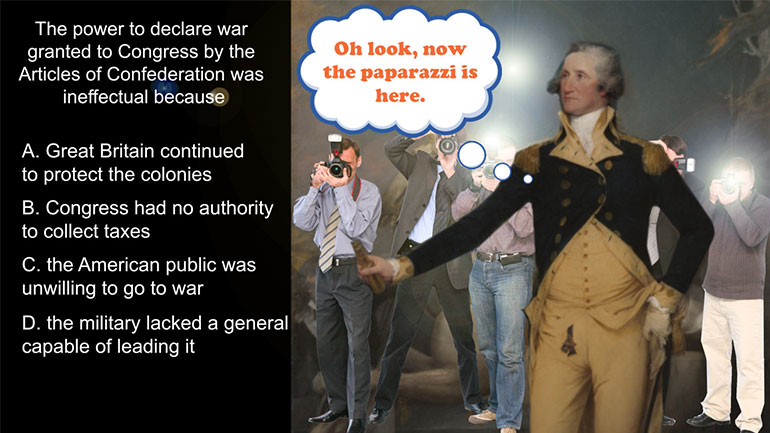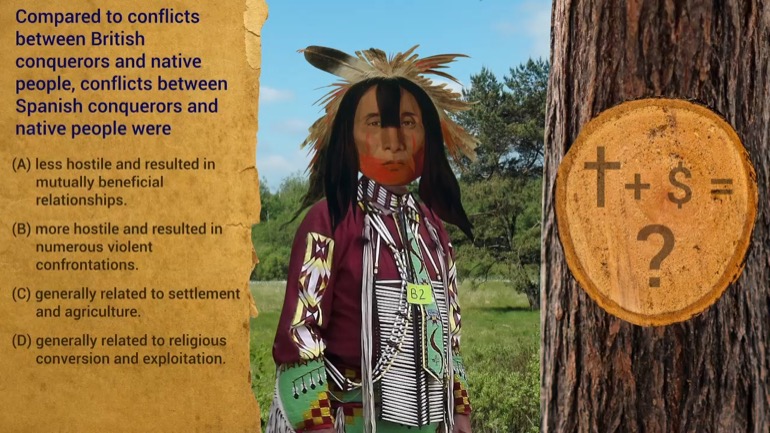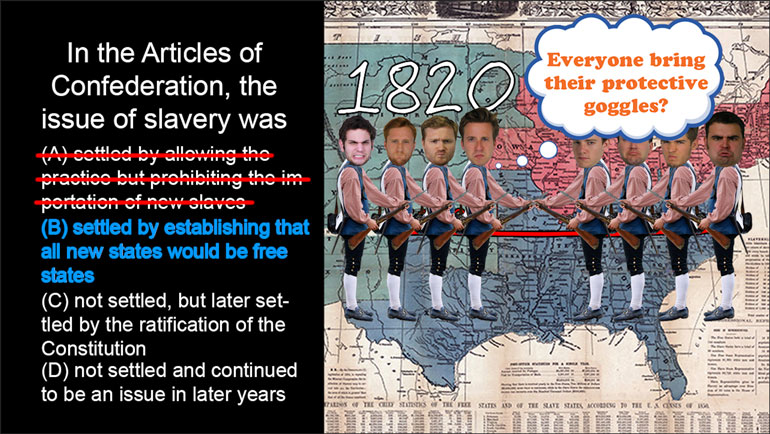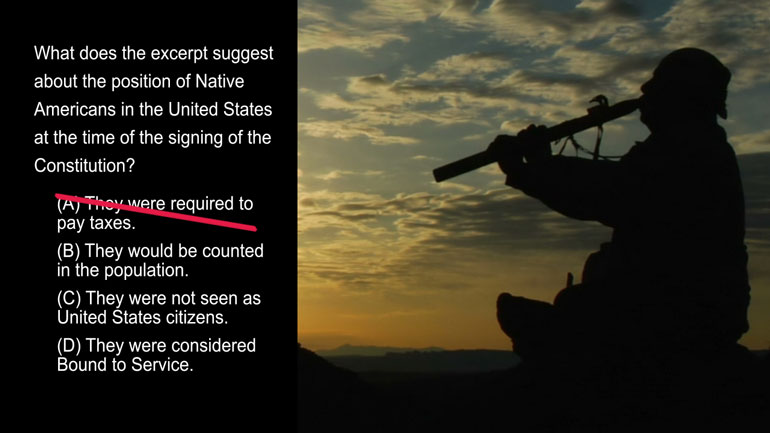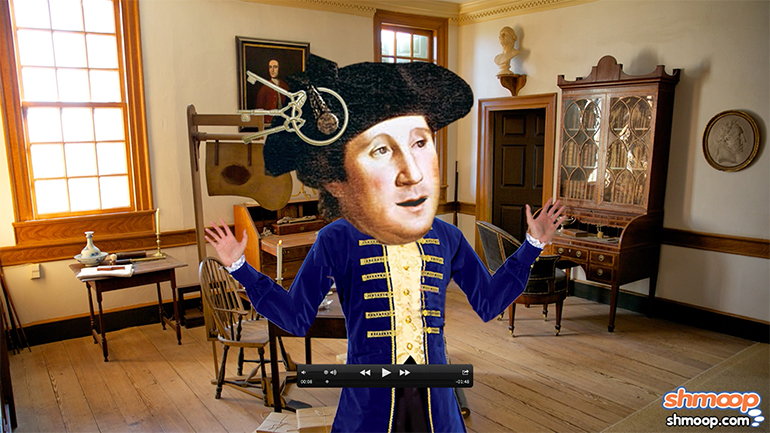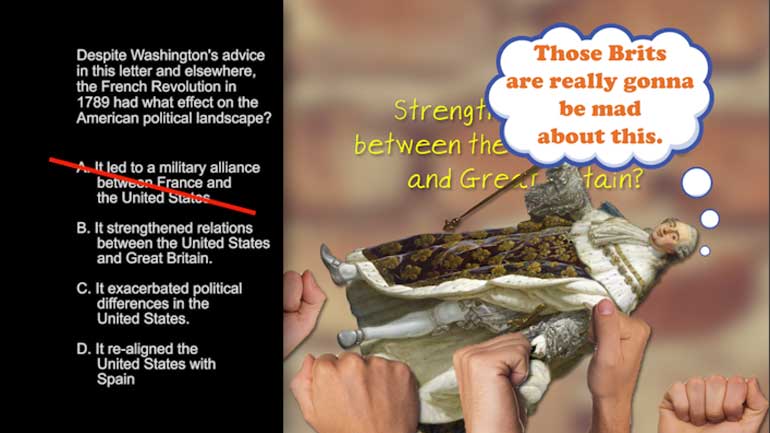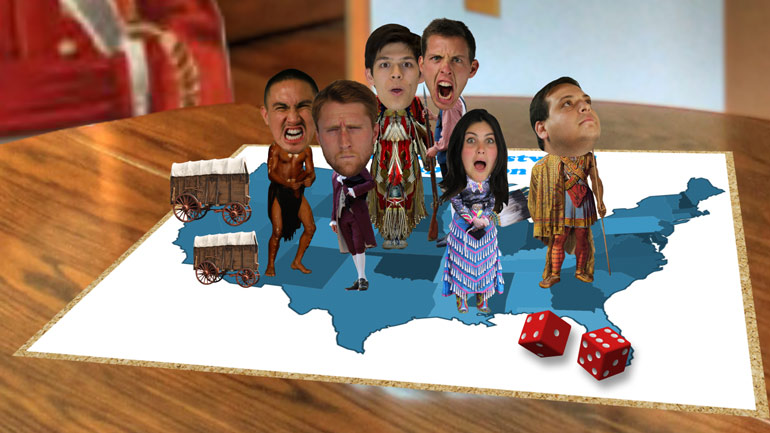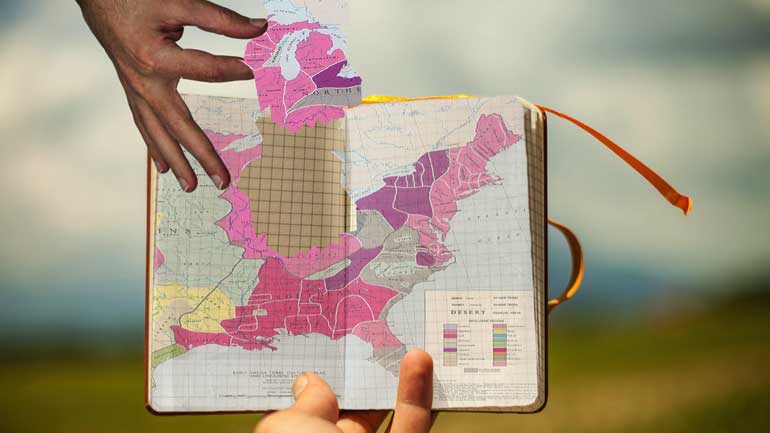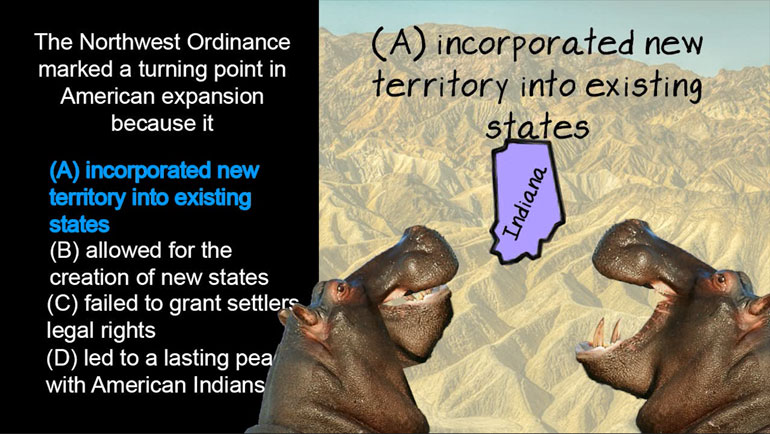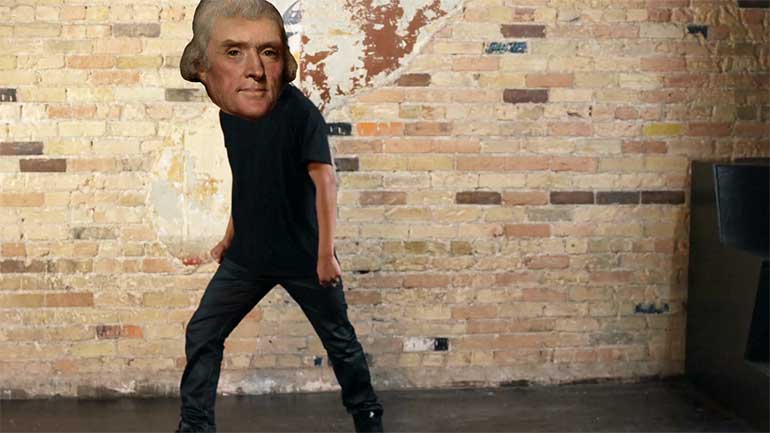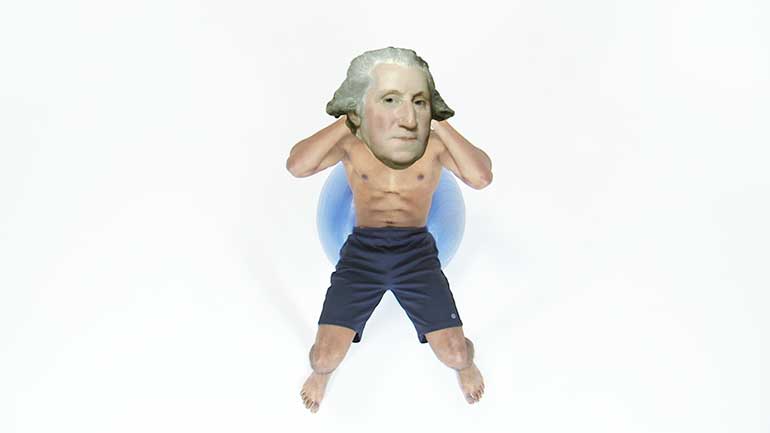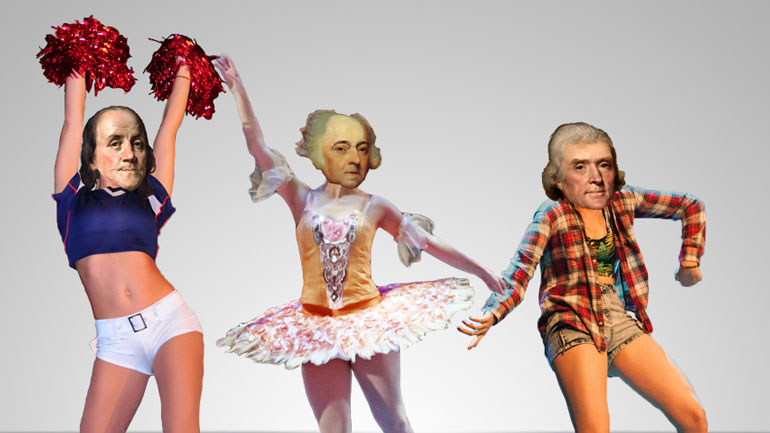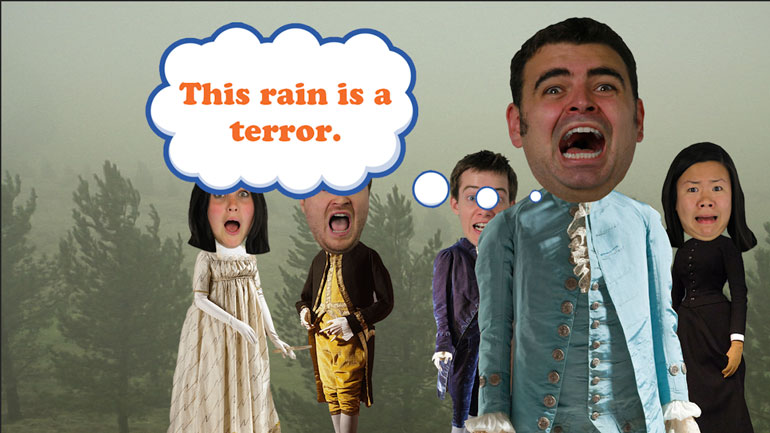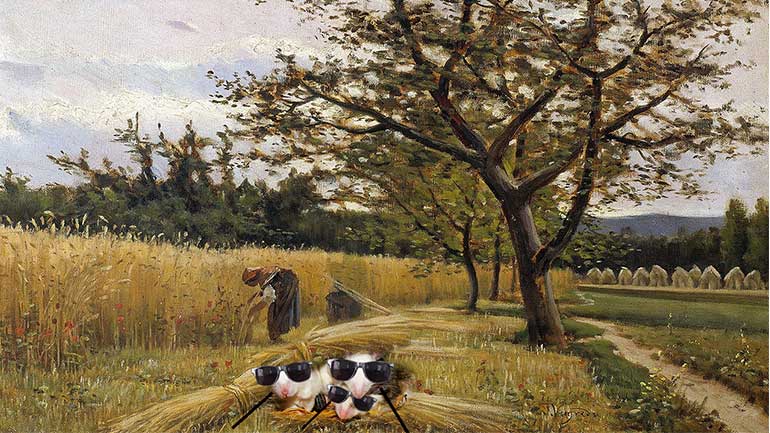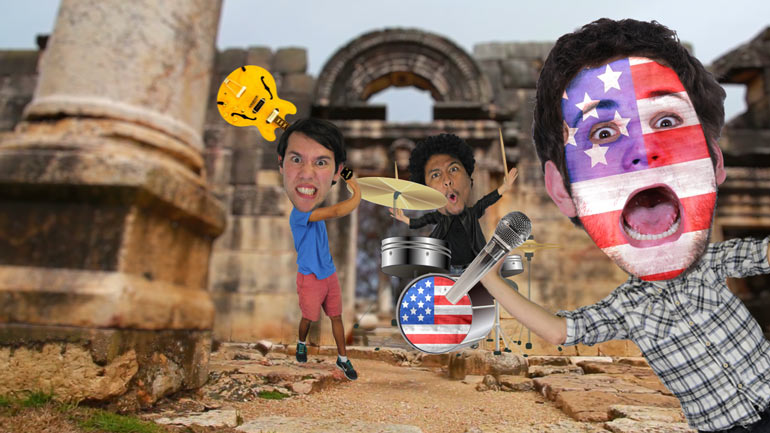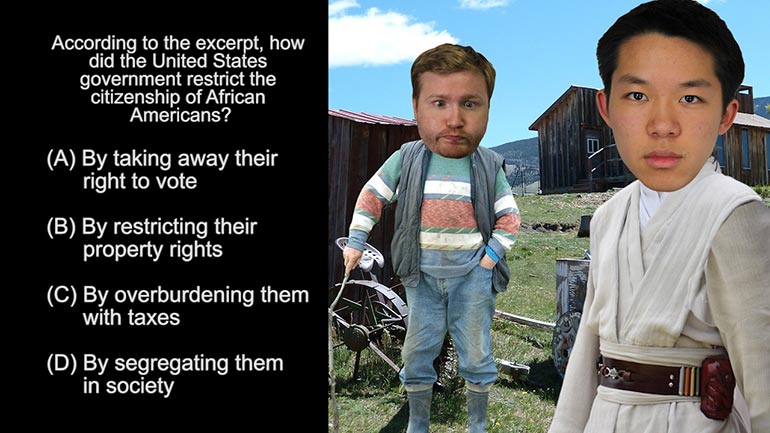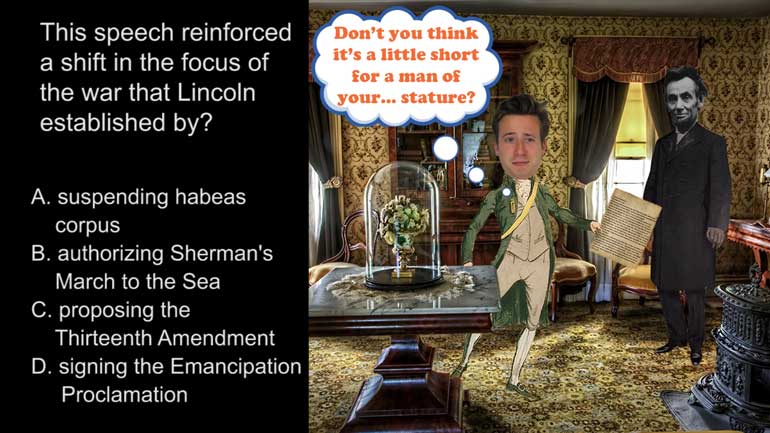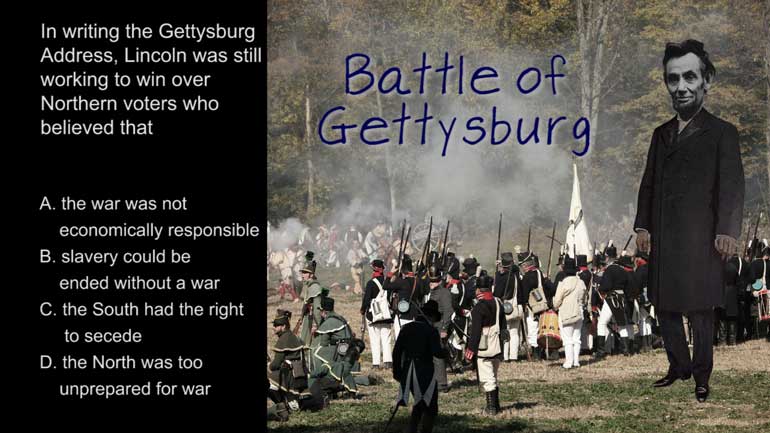ShmoopTube
Where Monty Python meets your 10th grade teacher.
Search Thousands of Shmoop Videos
AP U.S. History Videos 273 videos
Today's lesson: The Civil War. A war may be civil, but it's never pretty. Well, aside from the Pretty Pink Fairy Wars of '93...but no one seems to...
AP U.S. History Period 1: 1491-1607 Drill 3, Problem 2. The cultivation of maize, depicted in the image, also played a significant role in which of...
AP U.S. History Exam 2.2. Prior to European contact, why was it necessary for the societies of the "Plains" region on the map to live a mobile life...
AP U.S. History 1.5 Period 2: 1690-1754 249 Views
Share It!
Description:
AP U.S. History 1.5 Period 2: 1690-1754. The sentiment expressed in the above passage most closely resembles the sentiment of which of the following?
Transcript
- 00:00
[ musical flourish ]
- 00:03
And here's your shmoop du jour,
- 00:04
brought to you by William Penn,
- 00:07
the permanent inker of American democracy.
- 00:11
All right, first up is the excerpt.
Full Transcript
- 00:13
But, next to the power of necessity...
- 00:15
[ mumbles ]
- 00:19
... honourable... Gotta love the way they spell that.
- 00:21
[ mumbles ]
- 00:23
And it's all by William Penn.
- 00:25
And now the question:
- 00:27
The sentiment expressed in the above passage
- 00:29
most closely resembles the sentiment of which of the following?
- 00:33
And here are the potential answers.
- 00:35
All right, Declaration of Independence, First Great Awakening...
- 00:38
... Second Great Awakening, huh.
- 00:40
All right, so, what exactly is the sentiment expressed
- 00:43
in this passage?
- 00:44
Well, we see phrases like,
- 00:46
"liberty without obedience is confusion,
- 00:49
and obedience without liberty is slavery."
- 00:52
Well, Penn is expressing those quintessential American values:
- 00:55
democracy, liberty, and protection from government abuse -
- 00:59
essentially the ice cream and apple pie
- 01:01
of American political doctrine.
- 01:03
[ gulping ]
- 01:04
So which of the following answers also expressed those values?
- 01:08
Was it B - the First Great Awakening?
- 01:11
Not quite. The First - and Second - Great Awakenings
- 01:14
were periods of intense religious revival in the United States.
- 01:18
So they're mostly focused on religious and spiritual matters -
- 01:21
not on how the government was structured.
- 01:23
[ crickets chirping ]
- 01:25
So we can eliminate B and D. [ buzzer sounds ]
- 01:27
So, were these values similar to the sentiment of C -
- 01:30
Manifest Destiny? Actually, Manifest Destiny was the belief
- 01:34
that America existed for white settlers
- 01:37
and that it was their obligation to colonize the continent
- 01:40
and expand their way of life.
- 01:42
That's a whole other ball of wax, so it's not C. [ buzzer sounds ]
- 01:45
That leaves us with A - the Declaration of Independence.
- 01:48
Those values Penn mentions -
- 01:50
democracy, liberty, and protection from government abuse?
- 01:53
Yeah, well, they're pretty similar to the preamble
- 01:56
of the Declaration of Independence, which claims
- 01:58
that all men have the right to
- 02:00
"life, liberty, and the pursuit of happiness."
- 02:02
So A is the perfect match.
- 02:05
[ gulping ]
Related Videos
AP U.S. History Exam 2.45. The journey shown on the map was an example of...what?
AP U.S. History Exam 2.26. This speech reinforced a shift in the focus of the war that Lincoln established by...what?
What did the Spanish messengers bring with them to North America? Hint: you probably wouldn't be thrilled to get this for your next birthday.
AP U.S. History Diagnostic 24. How did the United States choose containment over the National Security Council Report in Latin America?
AP U.S. History Exam 2.25. In writing the Gettysburg Address, Lincoln was still working to win over Northern voters who believed that...what?

